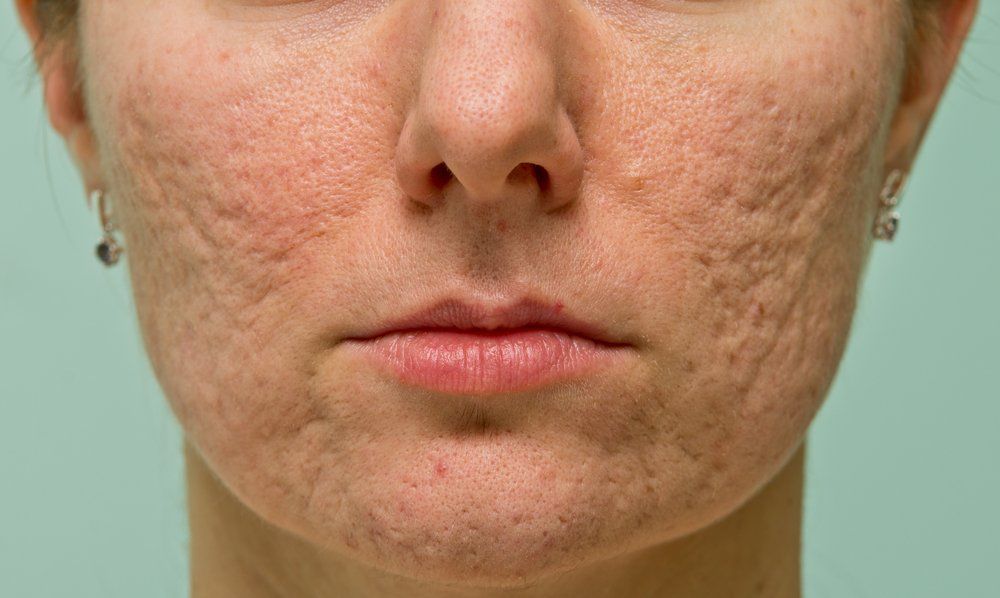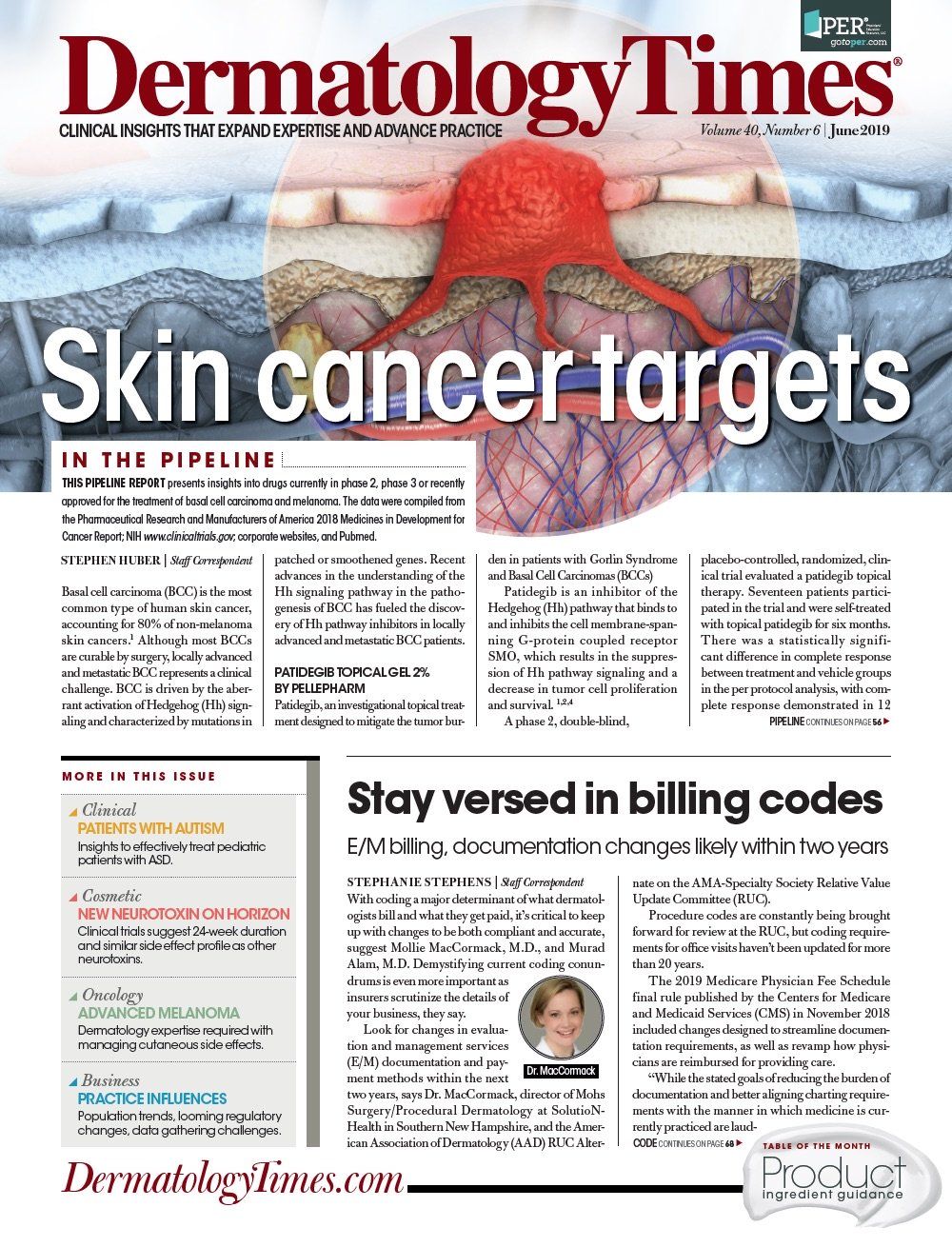- Case-Based Roundtable
- General Dermatology
- Eczema
- Chronic Hand Eczema
- Alopecia
- Aesthetics
- Vitiligo
- COVID-19
- Actinic Keratosis
- Precision Medicine and Biologics
- Rare Disease
- Wound Care
- Rosacea
- Psoriasis
- Psoriatic Arthritis
- Atopic Dermatitis
- Melasma
- NP and PA
- Skin Cancer
- Hidradenitis Suppurativa
- Drug Watch
- Pigmentary Disorders
- Acne
- Pediatric Dermatology
- Practice Management
- Prurigo Nodularis
- Buy-and-Bill
Publication
Article
Dermatology Times
Why does acne leave a scar?
Author(s):
A recent study explores how early inflammation and histological changes are involved in acne scarring by comparing the molecular profiles of acne lesions in patients who are prone to scarring against lesions from patients who are not prone to scarring. Here’s what researchers found.
“A fundamental solution for atrophic acne scars should be based on preventing scarring through intervention during early stages of acne," says Dae Hun Suh, M.D., Ph.D. (BudimirJevtic/Shutterstock.com)

A significant reduction of elastic fibers and collagen fibers combined with inflammation is observed in acne scarring, and these processes appear to be modulated by TGF-β1 signaling, a study published in the British Journal of Dermatology has found.1
This raises the possibility that an early treatment regimen strongly inhibiting inflammation and TGF-β1 signaling to help recovery of the extracellular matrix components may have the potential to prevent atrophic scarring, the authors suggest.
Acne scars are a major cosmetic worry for acne patients but they do not affect all patients. The pathogenesis of acne scarring is unclear and believed to differ to that of ordinary scarring, so researchers in Korea set out to investigate in more detail how early inflammation and histological changes are involved in acne scarring, as well as the specific molecules controlling the process, by comparing the molecular profiles of skin and acne lesions in patients who are prone to scar against those from patients who are not.
Their study included 30 patients with Fitzpatrick skin types III to IV, who had acne on their face. Fifteen patients were prone to atrophic scars - had 30 or more atrophic acne scars on the face and said that their acne usually developed into acne scars – and 15 patients had almost no evidence of atrophic acne scars and said that they rarely experienced them.
Skin biopsies were taken from acne lesions five times per patient: normal tissue, a papule at day 1 following the occurrence, at day 3, at day 7, and mature tissue (acne occurred more than 3 months ago). Immunohistochemistry, and quantitative real-time polymerase chain reaction were performed on the samples.
“We observed significant deficiency of total elastic fibers in mature atrophic scars. Moreover, we discovered that the lack of elastic fibers persisted from the beginning of acne inflammation,” says Dae Hun Suh, M.D., Ph.D., Department of Dermatology, Seoul National University Hospital, Republic of Korea.
Collagen fibers are essential in scar pathophysiology, and it has been suggested that a skewed ratio of collagen 1/3 as well as the amount of collagen fibers may affect the abnormal organization of extracellular matrix, subsequently modifying skin tensility and structure.
“Our findings indicated severe destruction of both collagen 1 and 3 but an increased ratio of collagen 1/3 in patients prone to acne scars compared to that in non-scar prone patients, implying that degradation occurs more sensitively to collagen 3 in patients prone to acne scars,” Dr. Suh says. Increased TGF-β1, which promotes compensatory recovery of collagen 1 more than collagen 3, might be involved in this process, he suggested.
The study also demonstrated significantly higher levels of proinflammatory cytokines associated with acne pathogenesis in patients prone to acne scarring. P. acnes stimulates the expression of proinflammatory genes such as TNF-α, IL-6, IL-12, and CXCL8 via toll-like receptor 2 signaling, and this inflammatory landscape can encourage the synthesis of matrix metalloproteinases in fibroblasts and endothelial cells, thereby leading to proteolysis of extracellular matrix.
P. acnes drives inflammatory reactions by initiating the infiltration of Th17/Th1 cells with increased IL-17 production in the perifollicular areas. The differentiation into Th17 cells is TGF-β1 and IL-6 dependent, and Th17 cells may aggravate acne inflammation via IL-17 related proinflammatory responses. Failure of delicate control of Th17/Th1 cells may trigger a vicious cycle worsening inflammation, the researchers suggested.
The study also demonstrated that TGF-β1 plays an important role as a modulator of inflammation and scar formation at the beginning of acne lesions. TGF-β1 participates in scar formation by directly regulating fibrosis or manipulating keratinocyte proliferation. It has been recognized that TGF-β1 drives extracellular matrix synthesis and fibroblast proliferation as well as myofibroblast differentiation responsible for tissue contraction during scarring. TGF-β1 can also restrict proliferation of keratinocyte through disturbing transcription of c-Myc or inducing transcription of p21.
“It is presumed that devastation of elaborate regulation of TGF-β1 signaling may have an effect on atrophic acne scarring by not only fortifying inflammation but also affecting fibrosis itself and epidermal proliferation,” Dr. Suh says. “It is postulated that faultily tuned TGF-β1 in patients who are prone to acne scars fails to restore extracellular matrix destruction normally, which is contributed by amplified inflammation and impaired epidermal proliferation.”
Approaches for improving acne scars including soft tissue fillers, microneedling and most recently use of stem cells. “Their effectiveness is often unsatisfactory because they only focus on neocollagenesis in atrophic scars which are already finalized,” Dr. Suh says. “A fundamental solution for atrophic acne scars should be based on preventing scarring through intervention during early stages of acne. Therefore, it is expected that our findings can provide molecular evidence of establishing novel strategies such as anti-inflammatory or anti-TGF-β1 agents to avoid atrophic scarring.”
References:
Moon J, Yoon JY, Yang JH, Kwon HH, Min S, Suh DH. Atrophic acne scar: A process from altered metabolism of elastic fibers and collagen fibers based on TGF-β1 signaling. Br J Dermatol. 2019 Mar 1. doi: 10.1111/bjd.17851. [Epub ahead of print]






